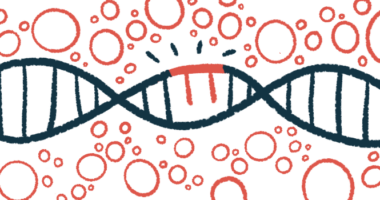60-year-old is oldest SMA patient with no symptoms: Case report
Researchers propose type 5 label for very late onset disease

Researchers described what they believe to be the oldest asymptomatic person with genetically confirmed spinal muscular atrophy (SMA) to have ever been reported in a case study.
The 60-year-old man, who came in with symptoms of numbness thought to be due to a pinched nerve in the neck, was eventually diagnosed with SMA type 4 via genetic testing after imaging tests showed signs of nerve damage consistent with the disease. Symptoms linked to the pinched nerve resolved spontaneously, with no other SMA symptoms arising.
“This case highlights diagnostic challenges of late onset patients, especially when they do not have known family history,” the researchers wrote, noting that doctors should consider an SMA diagnosis when certain patterns of nerve damage are observed.
The case report, “Subclinical spinal muscular atrophy at 60 years old,” was published in Neuromuscular Disorders.
Newborn screening, prompt therapy may detect more cases
The most common types of SMA are characterized by mutations in the SMN1 gene and a loss of the SMN protein, leading to degeneration of the motor nerve cells that communicate with muscles to coordinate voluntary movements. These SMA types vary in disease severity and age of onset.
In addition to SMN1, a gene called SMN2 provides instructions for making SMN protein, albeit to a lesser extent. SMN2 can partly compensate for mutations in SMN1: patients with more copies of SMN2 tend to have less severe disease.
Type 4 SMA is a rare and relatively mild form, in which symptoms usually manifest in adulthood, progress very slowly, and come with a normal lifespan. Relative to more common and more severe SMA types, its natural history and progression are not well characterized, according to the researchers.
Newborn screening programs accompanied by the prompt initiation of SMA therapies are expected to detect more asymptomatic and mildly affected patients, increasing the importance of understanding how this SMA type manifests, they said.
The scientists recounted the case of the SMA type 4 patient they believe is the oldest asymptomatic patient ever described. He came to their clinic experiencing sudden numbness in his right arm without a known cause. It wasn’t causing any weakness or problems with daily life.
When they examined the man in the hospital, the doctors did not see much, save for mild reductions in muscle strength of the elbow and some reduced reflexes in the arms. He told them his 48-year-old brother had experienced progressive weakness starting in adolescence.
A CT scan showed abnormalities in neck areas of the spine where damage or nerve compression is known to cause pain, weakness, or numbness, called radiculopathy.
Tests of nerve and muscle health showed signs of chronic motor neuronopathy, or damage to motor nerve cells — a hallmark of SMA. Genetic testing found a mutation in the SMN1 gene, which is the known cause of SMA, and four copies of the SMN2 gene, confirming the diagnosis.
Researchers propose new label for asymptomatic, late-onset SMA
The man’s symptoms resolved spontaneously, and his most recent neurological exam was entirely normal. Based on that, it was assumed that the numbness had arisen due to a pinched nerve in the spinal cord.
For that reason, and given the fact that he was not experiencing progressive muscle weakness, the researchers consider the man to be asymptomatic, as far as SMA is concerned. His brother, who did not undergo testing, may have SMA type 3, according to the scientists.
The researchers proposed a new category of SMA, type 5, for patients who are asymptomatic or whose symptoms appear after age 40, given that such individuals may require a different treatment approach. There is currently no consensus on treatment guidelines for these mildly affected patients, they noted. In Portugal, where the study was conducted, national rules stipulate that SMA therapies are not covered for these patients.
Still, some patients with muscle weakness might benefit. The scientists said more studies are needed to identify genetic or other factors that might help stratify which SMA type 4 patients are good candidates for starting treatment, even if they don’t have symptoms yet.
“The identification of protective factors (genetic and environmental) in very late onset patients could contribute to a better understanding of this condition and possibly to the judicious use of new disease- modifying therapies,” the team wrote.









